A Kyoto Treasure
The most exquisite kind of Japanese cuisine is probably kaiseki ryori or kaiseki in short. It is a classical multi-course meal (a banquet really) that is like a large-sized Japanese version of a děgustation (tasting menu) meal. Kaiseki ryori is said to have had its origins in connection with chado, the traditional Japanese tea ceremony in the 16th century. It is less well known than sushi, ramen, sukiyaki or yakitori mainly because it is much more expensive and less commonly available. My first taste of kaiseki was at Unkai at the ANA Singapore Hotel and it was a delicious experience.
However, if you want to eat kaiseki, the best place to eat it is really in Kyoto, the city it originated from. And the restaurant in Kyoto that serves arguably the best kaiseki is Kikunoi (459 Shimokawara-cho, Yasakatoriimae-sagura, Shimokawara-dori, Higashiyama-ku, Kyoto-shi, Kyoto 6050825). That also means that Kikunoi is probably the best kaiseki restaurant in the world.
Kikunoi
Kikunoi was first recommended to me by someone in the restaurant business as the place to have kaiseki in Kyoto. That was before Michelin decided to include Kyoto in its dining guides in 2010 and award Kikunoi its highest accolade of three stars. By the way, chef-proprietor Yoshihiro Murata also happens to be on the International Culinary Panel of Singapore Airlines together with other renowned chefs like Gordon Ramsay.Ferran Adrià has described Yoshihiro Murata as a “truly unique chef” and Nobu Matshuhisa has described him as representing “the best of a rarified area of Japanese cuisine” with “a firm commitment to traditional excellence along with a desire to always look for something fresh and innovative”.
Kikunoi was founded in 1912 by the grandfather of Yoshihiro Murata and now comprises three restaurants: Kikunoi (or Kikunoi Honten) in Kyoto, Roan Kikunoi in Tokyo and Asakasa Kikunoi, also in Kyoto. Kikunoi, the main restaurant that won the three Michelin stars, is actually a ryotei ie, a high class Japanese restaurant that traditionally features geisha entertainment and only accepts new customers by referral. Naturally, that was the one I went to.
According to Kikunoi’s English website (http://kikunoi.jp/english/index.html), the main restaurant’s interior artwork, flower arrangement and displays are changed to reflect each season. The restaurant’s name actually means “chrysanthemum well” after a local well that apparently produced chrysanthemum-shaped water dispersion. In order to understand Kikunoi, you need to understand a bit about Yoshihiro Murata’s background. He initially disappointed his father by wanting to be a French chef and actually spent six months in France and other European countries learning about French and European cuisine. That probably accounts for his reputation for being creative. Yoshihiro has also written an informative book in English called Kaiseki featuring food from Kikunoi.
First Visit
After breakfast on Saturday 20 February 2010, our second day in Japan, my wife and Iheaded for Higashiyama Mountain Range area in Kyoto to look for Kikunoi. After some wrong turns, we managed to find Kikunoi and tried to make a reservation for lunch that day. The old man who met us at the doorway could not speak English and eventually got an American (based on his accent) trainee chef who was working in the kitchen to speak to us. To my great disappointment, the entire restaurant was booked for a wedding lunch that day. Fortunately, we were able to make a reservation for lunch the following Monday day and we ordered their kaiseki set lunch at the same time: Kikunoi’s practice is for orders to be taken with meal reservations to ensure that diners will get want they want.
Kaiseki Lunch
Having been to the restaurant and having secured our precious lunch reservation, we took our time to get there on Monday. We stopped by the Nishiki Market for a walkabout and a snack of marinated baby octopus before taking the bus to Kikunoi. Even then, we arrived early – at 11.50 am – but they were already open and ready for us although they only officially open for lunch at noon.
We took our shoes off and were welcomed by a kimono-clad Japanese hostess who took us to our private dining room deep in the restaurant building. If we had ordered the bento lunch, we would have been seated in the main dining room with the other bento lunch diners. She also pointed to the toilet that was in the opposite side of the corridor. Fortunately, she was friendly and could speak some English and it made the experience less intimidating for us. Our room was a traditional Japanese room with tatami mat flooring and wooden sliding doors. The only thing really modern was the full-length glass window that looked out to a beautifully kept Japanese garden.
We were each given a bowl of green tea and a hot towel and then served the sakizuke or first course. It was the chef’s signature sea bream milt that actually looks like a dessert of vanilla ice cream. I did not know what “milt” was and had to go back to check the dictionary for its meaning. If you’d really like to know, it is the semen of male fish. All I can say is that it had an interesting taste that was not unpleasant but neither was it anything to rave about. The good thing was, the food got progressively much better after that.
Our Japanese hostess passed us a copy of Kaiseki after serving the first course. Thereafter, in between courses and bites, we dipped into the book for background on the chef and the restaurant and also to see if our dish was featured. The availability of the book made the meal an educational experience and enhanced my experience at Kikunoi. I usually face two competing interests whenever I eat at some place special. On the one hand, I wish to enjoy every moment of the experience. Yet, I also want to record the experience fully with as many photographs and notes as possible. Usually, the food wins so my notes, if there are any, would merely describe the food as “tasty” or “delicious”. However, having Kaiseki during the meal and knowing also that I could refer to it back in Singapore meant that I did not have to take too many notes during lunch.
The rest of the courses came and went like a wonderful parade. Our hassun or second course was a colorful and tasty assortment of wild plants and seafood, including octopus, squid and salmon roe. We then had a bowl of appetizing soup followed by mukozoke, a dish of tuna, squid and salmon sashimi. According to renowned Japanese chef and culinary school founder Shizuo Tsuji, the soup and the sashimi are supposed to be the two dishes by which you should judge a Japanese meal. Kikunoi aced this test as every piece of sashimi was superbly fresh and the soup was delicious.
Our yakimono or grilled course was a yummy broiled seasonal fish that our hostess could not name in English and our gohan or rice course was a donburi (rice bowl dish) of savory egg, fish and mushroom. Next, we had chirashi-zushi or scattered sushi i.e. sushi with rice in a bowl and ingredients scattered on top or mixed in. Kikunoi does not have raw stuff in its chirashi-zushi because it would have already been served as a sashimi dish earlier. Therefore, its chirashi-zushi is topped with different cooked ingredients like anago sea eel, dried shiitake mushrooms, warabi bracken fern shoots, kuruma ebi, kinshi tamago and kinome leaf buds instead (14 according to Kaiseki but I did not count). According to the book, each bite of chirashi-zushi is also supposed to yield a different taste. Our chirashi-zushi was a beautifully arranged bowl of multi-coloured ingredients that appealed both to the eyes and the mouth.
We ended our meal close to 3 pm after a bowl of green tea and mizumono, a seasonal dessert of ice cream and a piece of slightly caramelized cake. The entire lunch experience was wonderful and I was quite sad it had to end. After lunch, we took a stroll to the Gion area before boarding a bus for our next destination, Kyoto’s famed Philosopher’s Walk, to expend some calories.
Our kaiseki lunch cost 8,400 yen (around S$135) per person and was a relative bargain considering we had our own private room, toilet and hostess. I have paid more for less in the past. Kikunoi is really one of those places you should save up for and go to at least once in your life. It ranks up there among my top dining experiences.
Richard Tan Ming Kirk
E-mail: [email protected]
© Richard Tan Ming Kirk
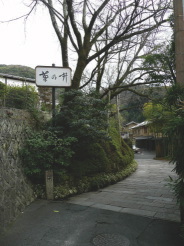
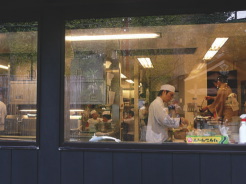
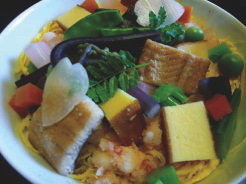
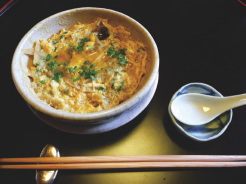
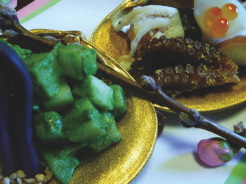



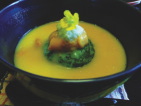

Yakimono












